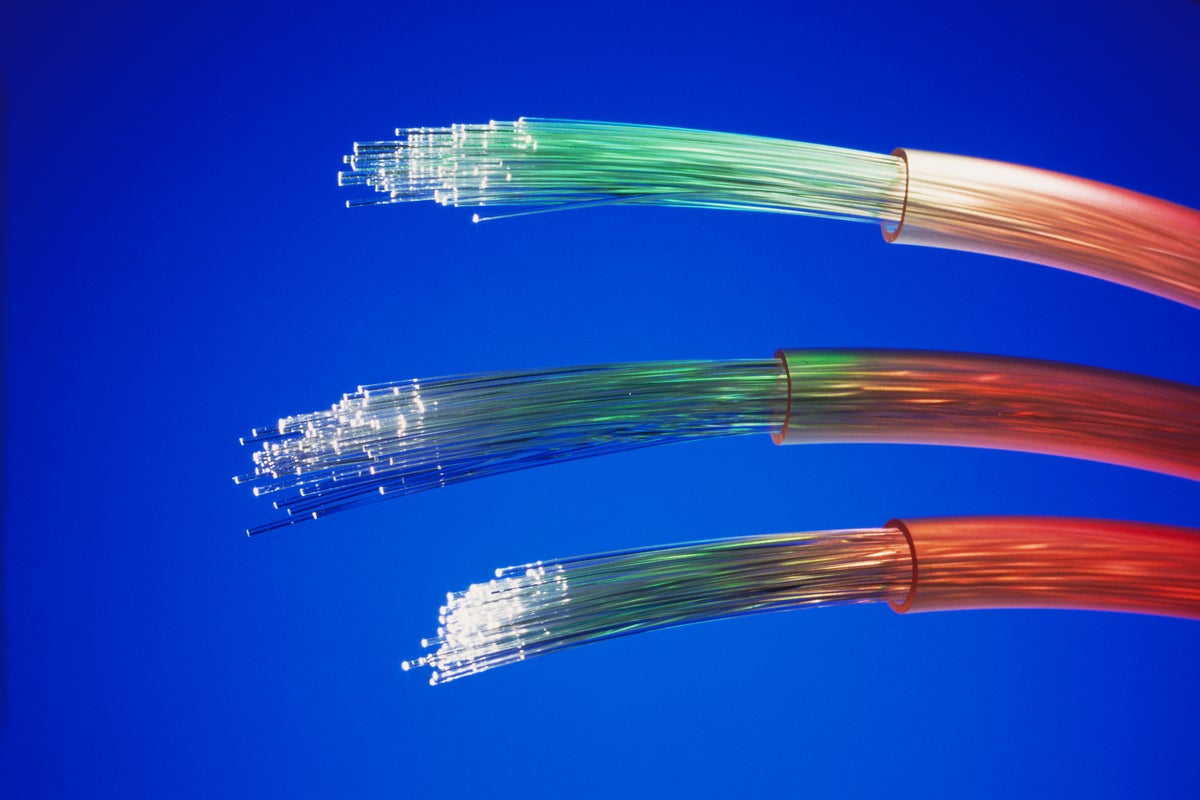New ‘Glass Straw’ Fibers Could Speed Up the Internet
A cable design that sends light through air rather than solid glass could cut signal loss and make long-distance transmissions cheaper
Typical optical fibres consist of thin, solid glass wires. Tweaking the design could allow them to carry more data over longer distances.
Join Our Community of Science Lovers!
A new type of hollow optical fibre promises to boost the amount of data that can be carried in each glass strand, and to do so over longer distances. This could help to make telecommunications systems faster and more efficient.
The design, described in Nature Photonics on 1 September1, replaces the hair-thin wire of solid glass that typical fibres are made from with a system of glass ‘straws’, in which five small cylinders, each containing two nested cylinders, are attached to the inside rim of one main cylinder. The diameter of each tube is finely tuned in such a way that that the space can only accommodate light of certain wavelengths. This means that when a light pulse of an appropriate wavelength is sent down the hollow central gap, it will stay there, rather than escaping.
“We really think this could be transformative,” says co-author Francesco Poletti, a photonics and materials-science researcher at the University of Southampton, UK.
If you’re enjoying this article, consider supporting our award-winning journalism by subscribing. By purchasing a subscription you are helping to ensure the future of impactful stories about the discoveries and ideas shaping our world today.
“If the new fiber can be manufactured and installed easily and proves to be durable, the result might be a faster, better classical Internet,” says Rod Van Meter, a quantum network engineer at Keio University in Tokyo.
Fibres that contain hollow glass tubes nested inside one another can prevent light from escaping.
The fibres will be produced by a start-up company called Lumenisity, a spin-off from Southampton that was bought by Microsoft in 2022. A typical glass fibre is made by melting a piece of glass, then stretching it to produce a strand of the desired thickness. To manufacture their hollow fibres, the researchers start with a larger version of their design — measuring about 20 centimetres in diameter. The hollows are pressurized during stretching, so that the configuration stays the same as the whole structure becomes around 100 micrometres wide.
Hollow optical fibres of various designs already exist and have found niche applications, for example, in connecting the many computing units in data centres, where speed is of the essence (light travels 45% faster through hollow, air-filled tubes than through solid glass). Van Meter calls the increase in speed “a dramatic change that people will pay a lot of money for.”
In addition to cutting losses, the hollow fibres can carry more than 1,000 times more power, and can do so over a broad spectrum of wavelengths — including the single-photon pulses of visible-spectrum light that are typically used for quantum-communication systems. Common fibres are typically only efficient at the infrared ‘telecom wavelengths’ of around 1.5 micrometres.
“This result is very interesting for the quantum communication community,” says Tracy Northup, an experimental physicist at the University of Innsbruck in Austria. Until now, hollow fibres have been prohibitively expensive even for small-scale laboratory experiments, she adds. “We in the research community can hope that scaled-up production may bring prices down significantly in the future.”
This article is reproduced with permission and was first published on September 2, 2025.
Davide Castelvecchi is a staff reporter at Nature who has been obsessed with quantum spin for essentially his entire life. Follow him on X @dcastelvecchi
First published in 1869, Nature is the world’s leading multidisciplinary science journal. Nature publishes the finest peer-reviewed research that drives ground-breaking discovery, and is read by thought-leaders and decision-makers around the world.
If you enjoyed this article, I’d like to ask for your support. Scientific American has served as an advocate for science and industry for 180 years, and right now may be the most critical moment in that two-century history.
I’ve been a Scientific American subscriber since I was 12 years old, and it helped shape the way I look at the world. SciAm always educates and delights me, and inspires a sense of awe for our vast, beautiful universe. I hope it does that for you, too.
If you , you help ensure that our coverage is centered on meaningful research and discovery; that we have the resources to report on the decisions that threaten labs across the U.S.; and that we support both budding and working scientists at a time when the value of science itself too often goes unrecognized.
In return, you get essential news, captivating podcasts, brilliant infographics, , must-watch videos, challenging games, and the science world’s best writing and reporting. You can even gift someone a subscription.
There has never been a more important time for us to stand up and show why science matters. I hope you’ll support us in that mission.
Thank you,
David M. Ewalt, Editor in Chief, Scientific American
Source: www.scientificamerican.com
